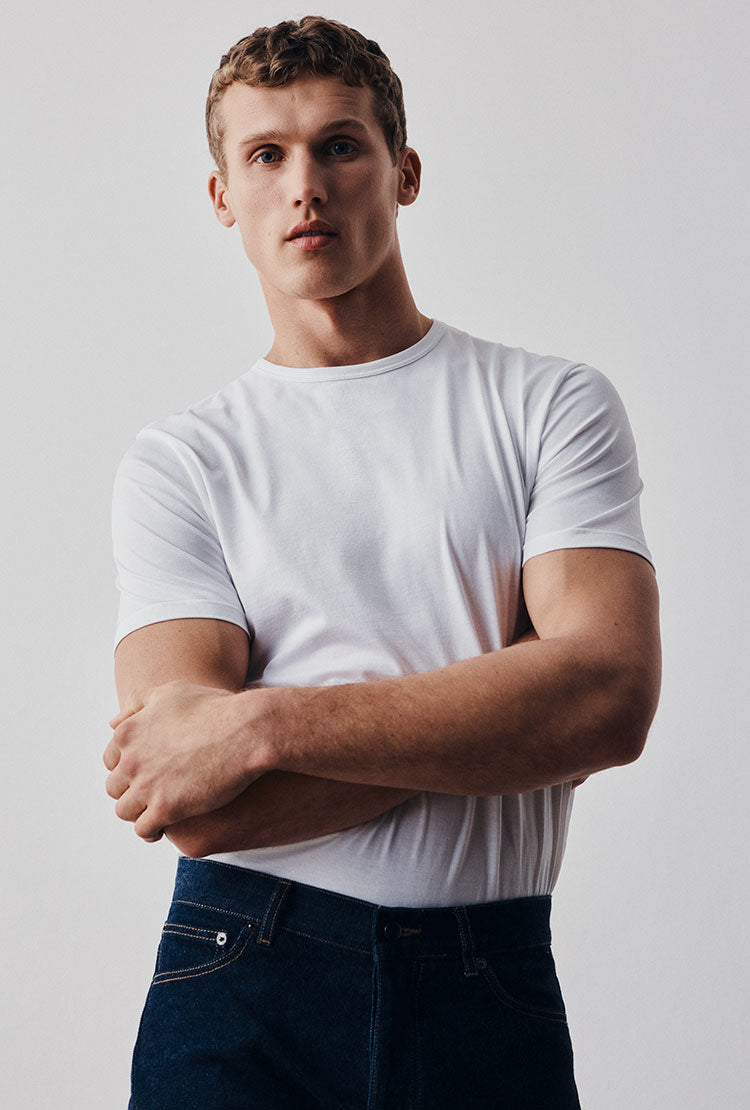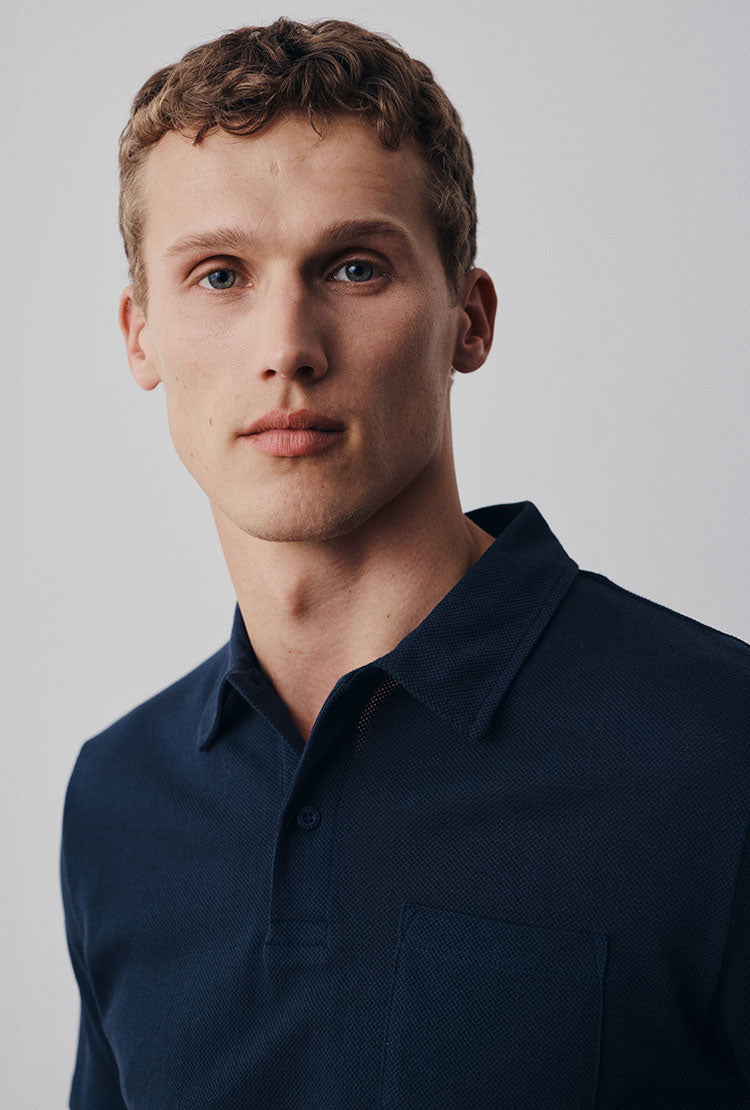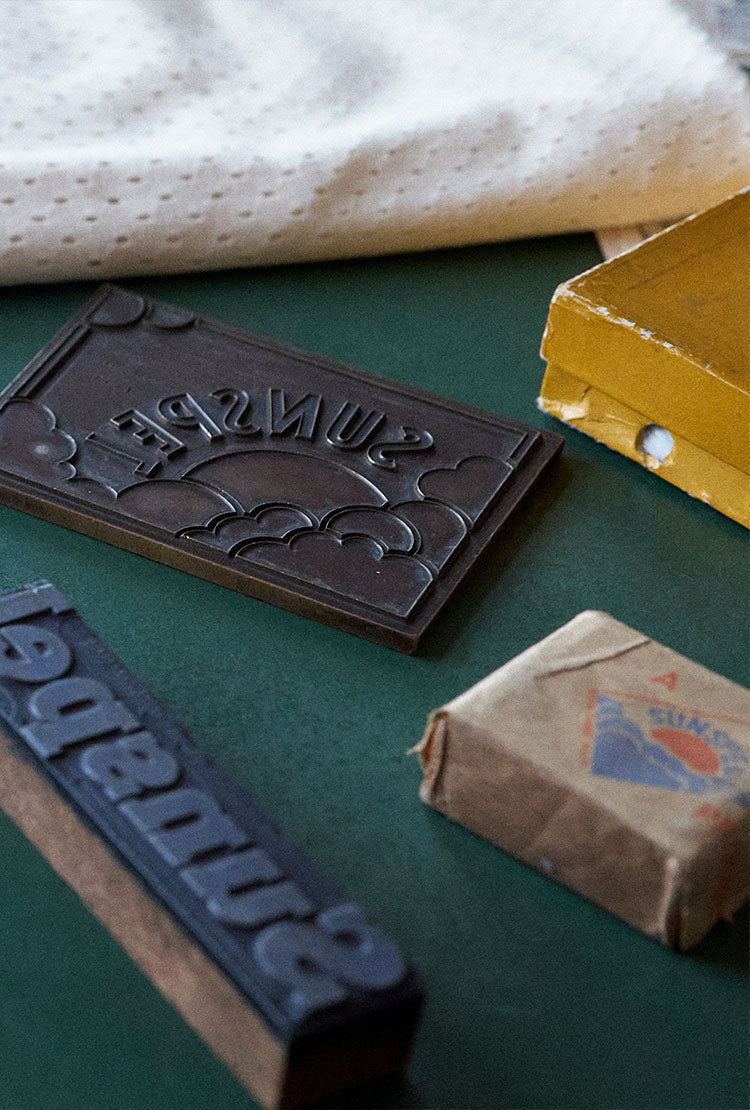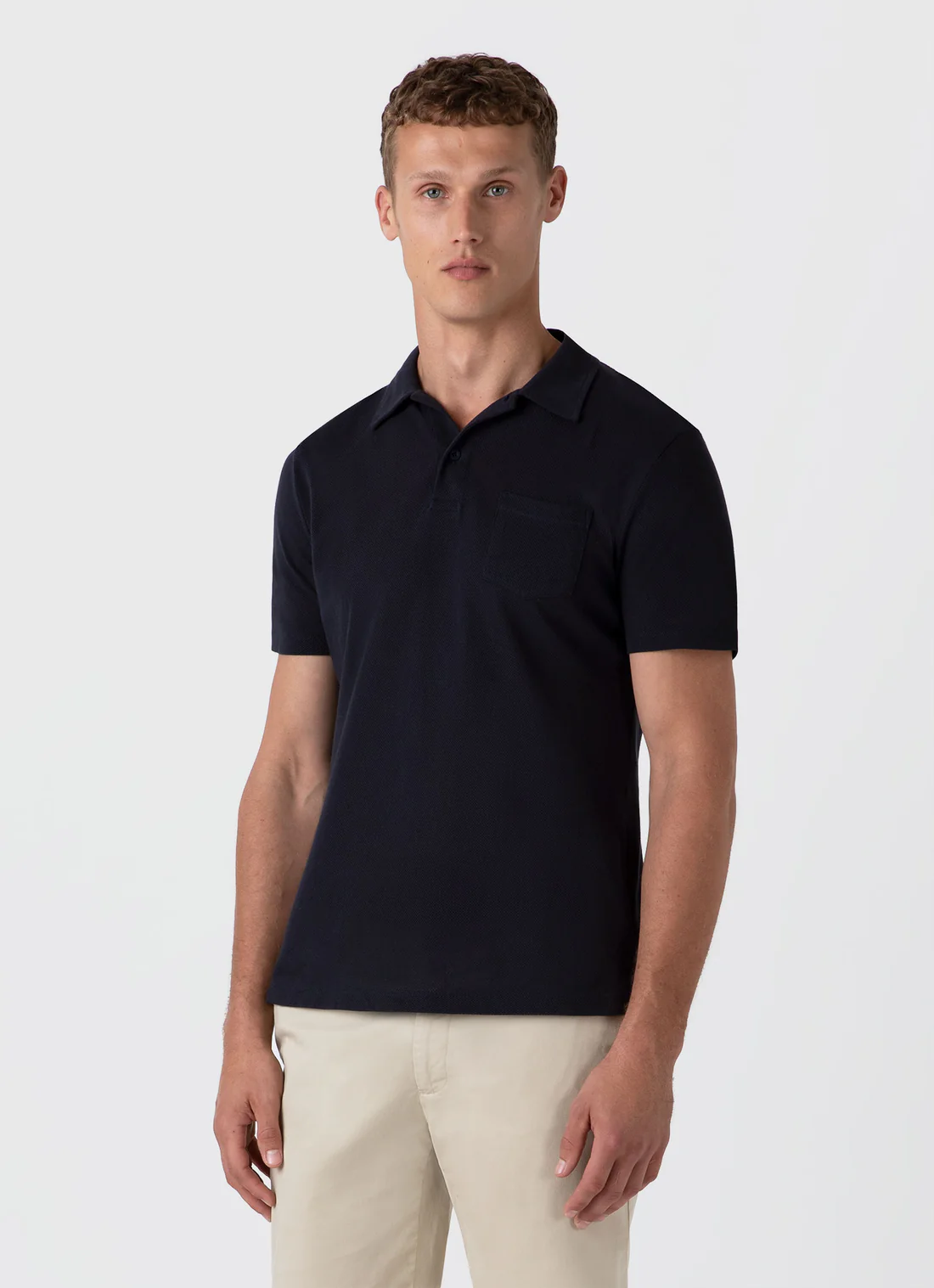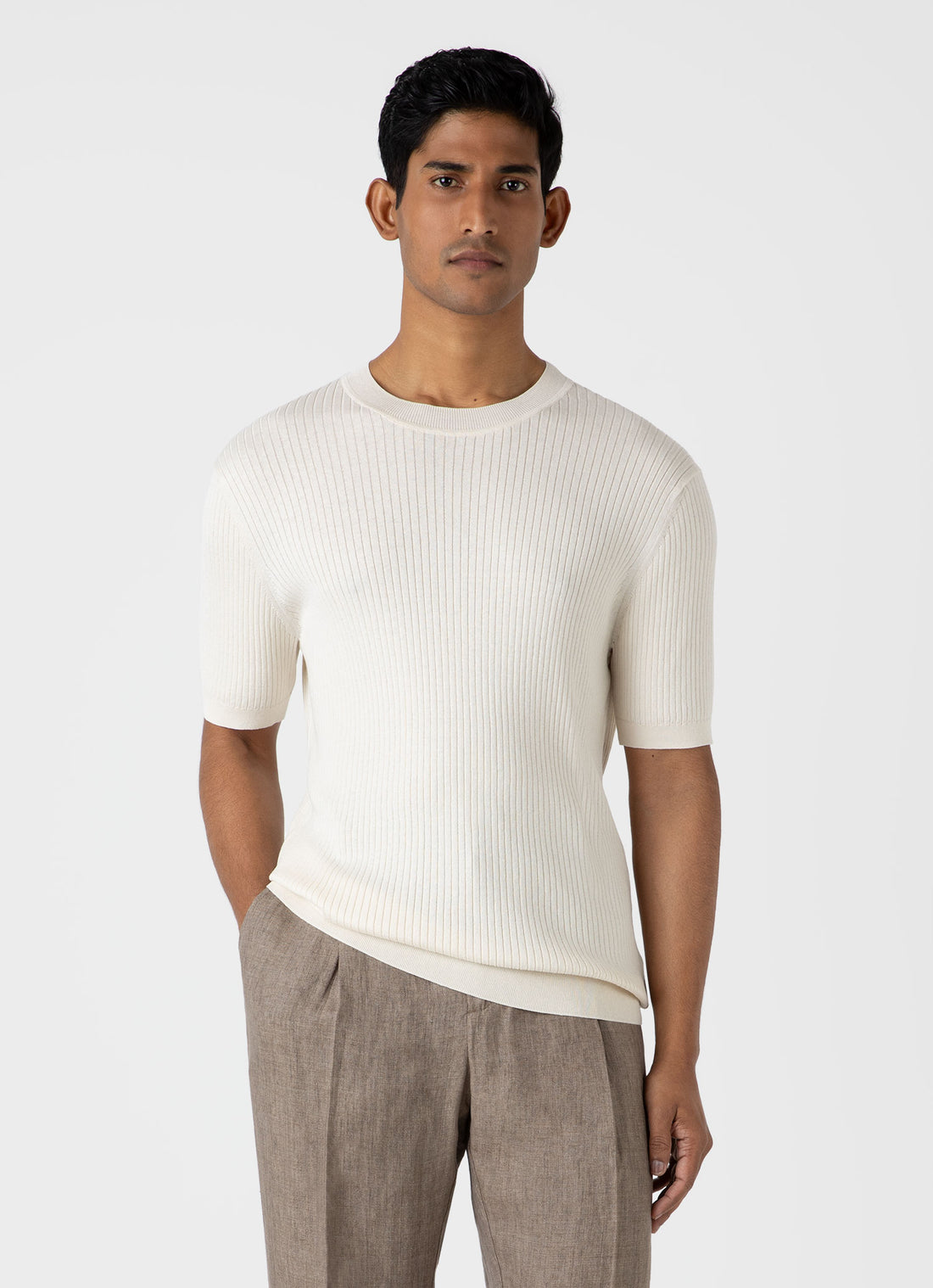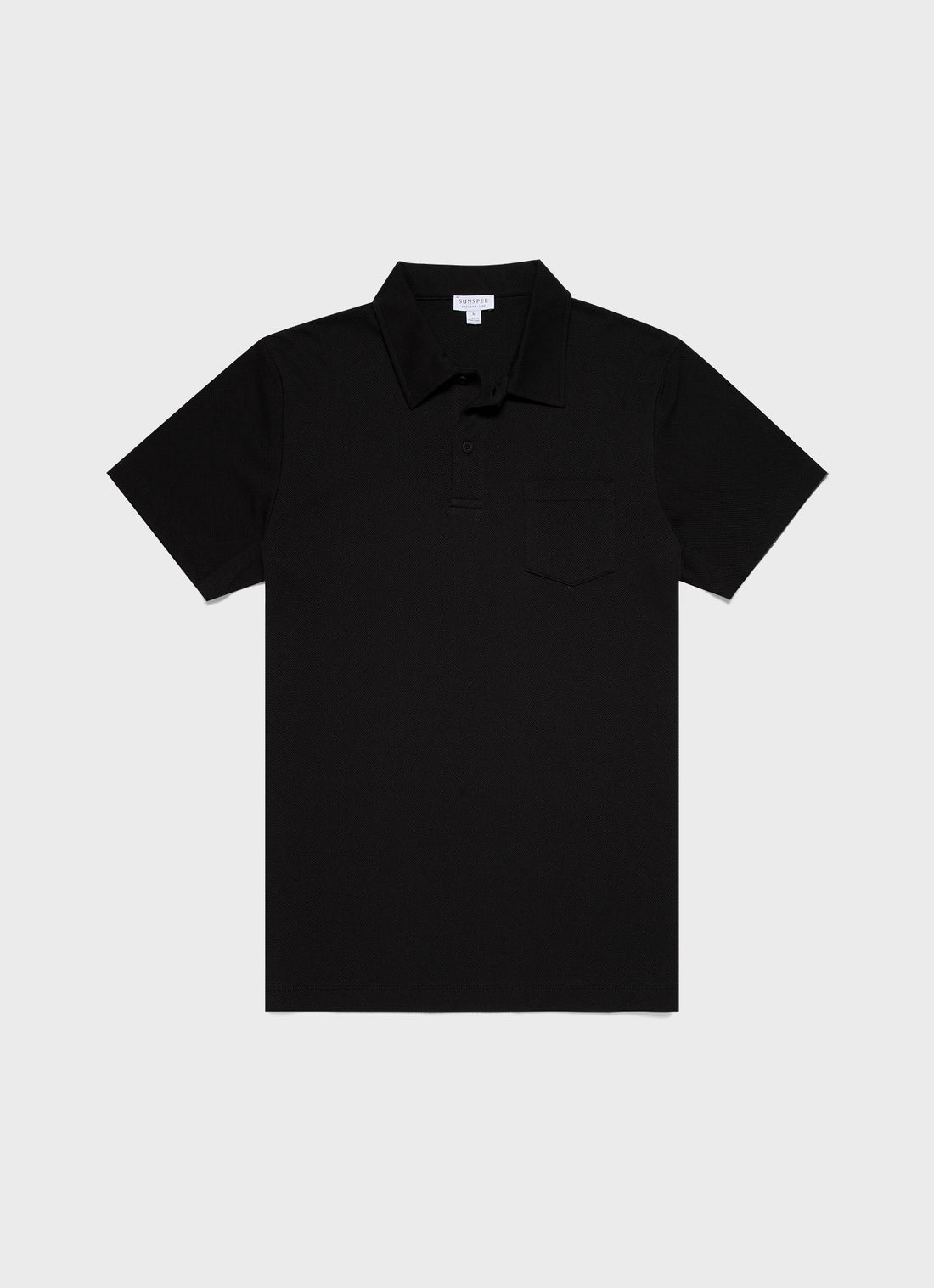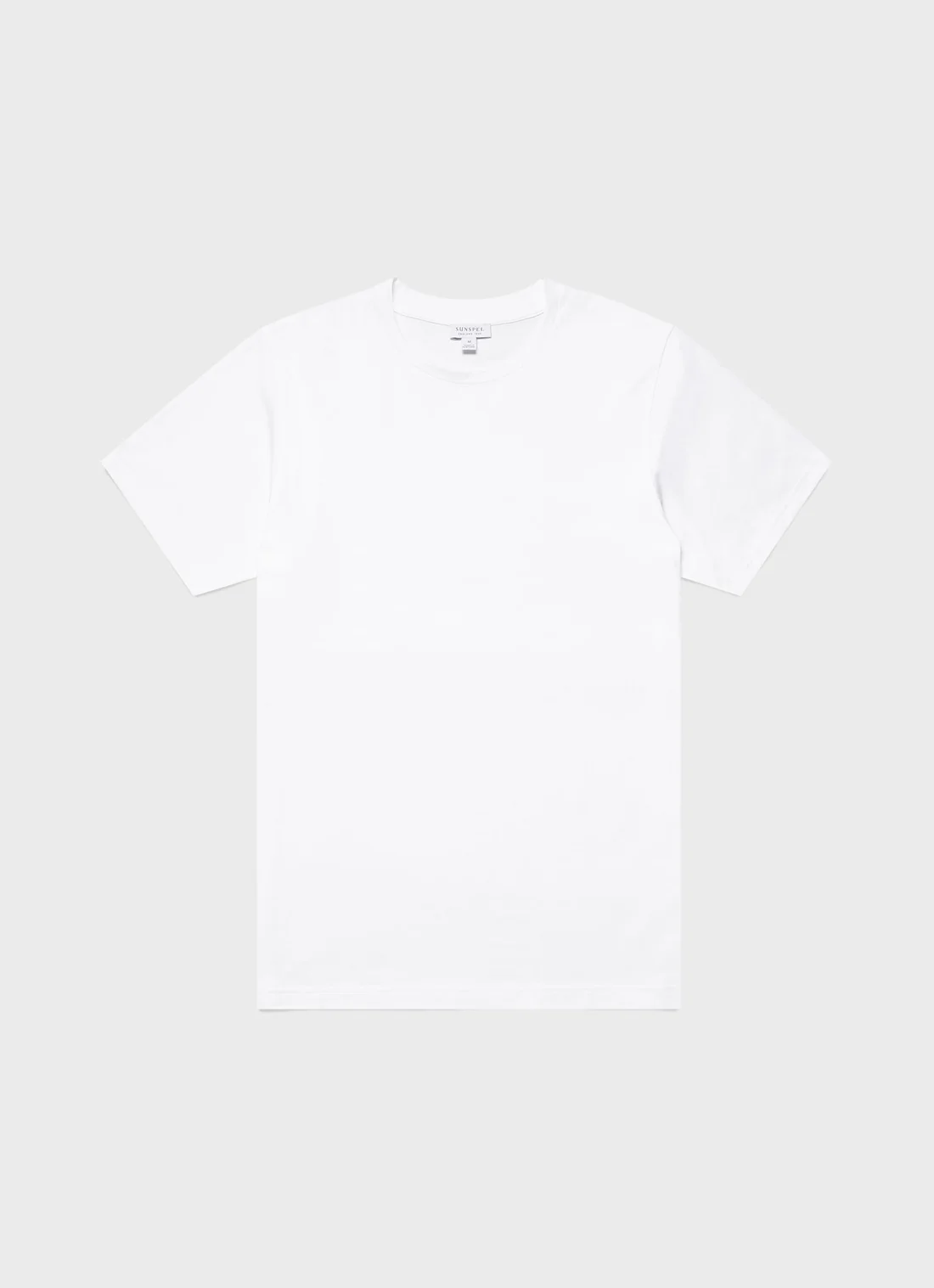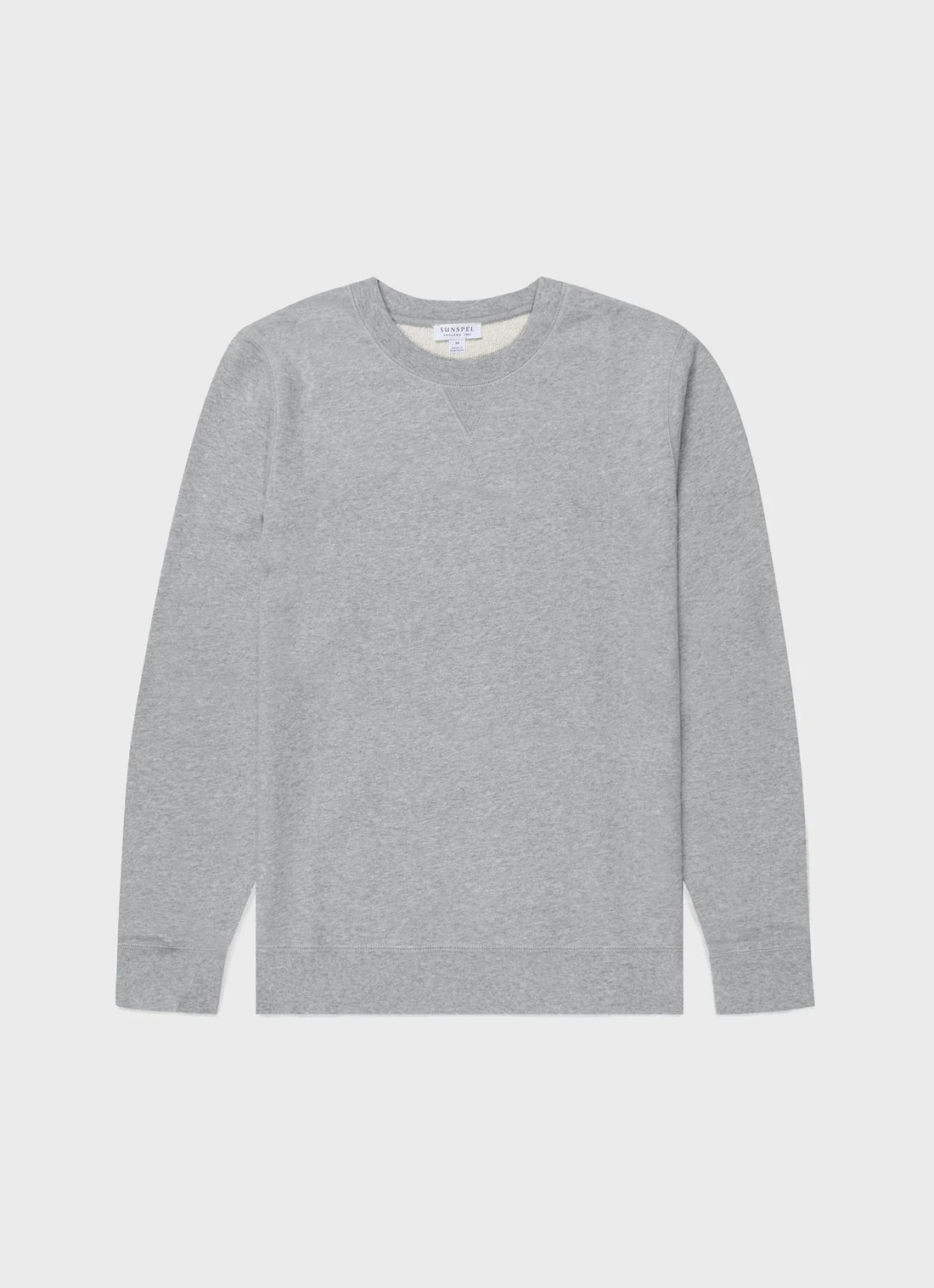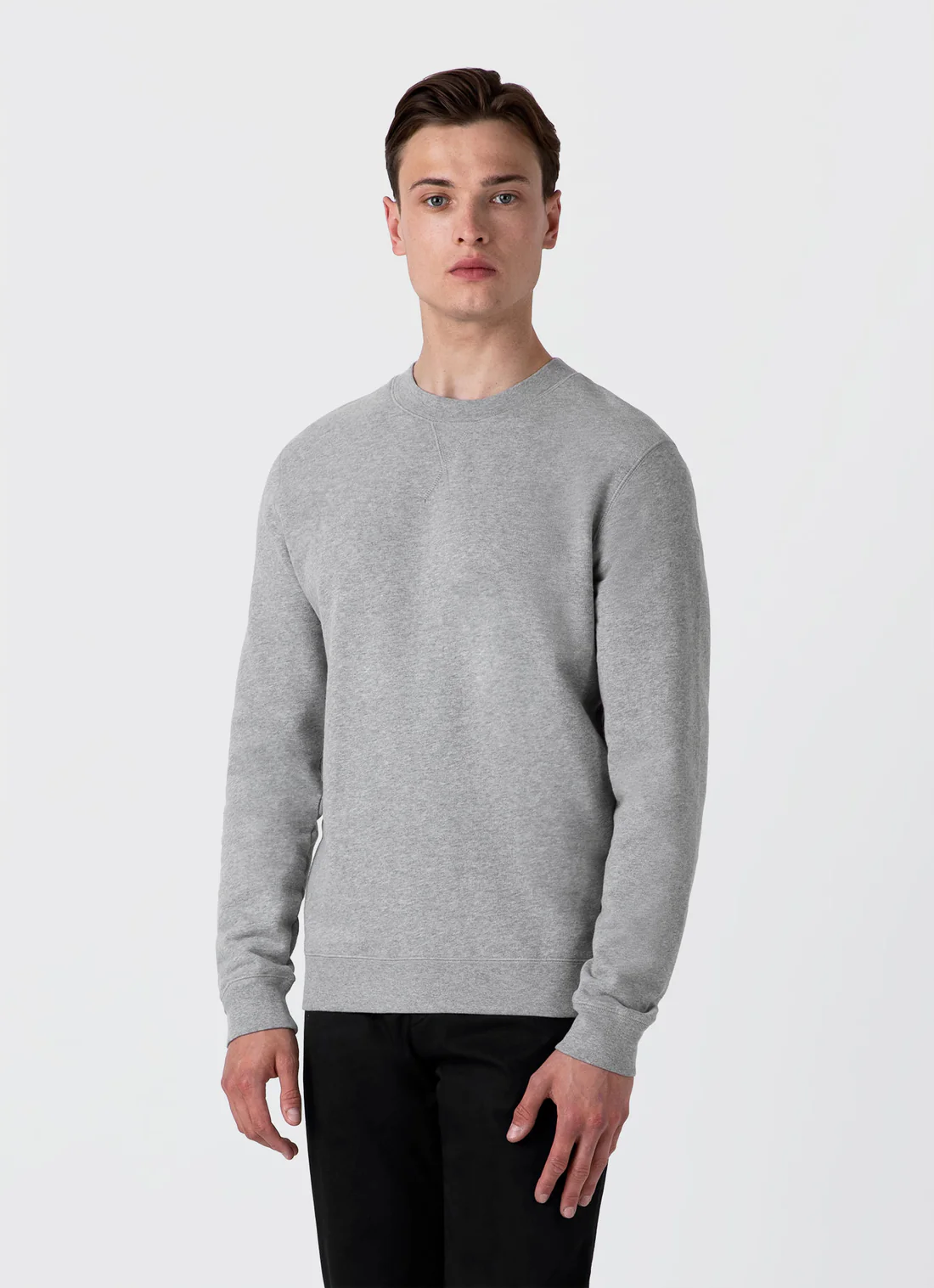New Perspectives
Jazz writer Rob Ryan talks to photographer and film-maker Dean Chalkley about Sunspel’s New Perspectives project – which involved creating and recording new music in just 48 hours.
It sounds like the kind of idea mooted among friends in a bar somewhere in the vicinity of the third or fourth round of drinks. Why don’t we get a group of young musicians from the current jazz and soul scene, who have never met, put them in a studio they’ve probably never been inside, and set them the challenge of writing and recording a brand-new piece of music in 48 hours?
Ninety-nine per cent of the time that thought would wither and die once the first obstacles presented themselves. But not if two of those involved are photographer Dean Chalkley (best known for his images of Amy Winehouse, Paul Weller and Jay-Z, as well as his short films) and Sunspel CEO Nicholas Brooke. Both have a habit of making things happen. Furthermore, when they came up with the concept, they hadn’t even been drinking.
‘I first met Nick years ago at a private view at Snap, a photographer’s gallery in Mayfair,’ says Chalkley. ‘We got to talking and found we got on, especially when it came to a shared love of music. We both like the same things – soul, jazz, fusion. I reconnected with him sometime later, and we decided it would be interesting to do something creatively together.’
That something – producing a piece of music from scratch – quickly acquired a title: New Perspectives, which echoed a famous album by jazz trumpeter Donald Byrd: A New Perspective. This was apt, because although the result might not be a pure jazz record, it has that music’s style and attitude in its DNA.
‘The thing is, the idea became like a vinyl record played backwards – the groove widened out to encompass more and more people. First David Telfer, Creative Director of Sunspel, who is clearly into his music because he makes amazing bass guitars as a hobby. He talked to Jasmine Chidgey, Head of Marketing, who was really into the idea as well. The thing about the guys at Sunspel, they didn’t see it as a cynical piece of corporate promotion that they controlled. They were really into the idea and, most importantly, they trusted us.’
‘This was a really liberating project for us,’ says Nicholas Brooke. ‘Being able to facilitate such a unique concept, unsure of what the end piece was going to be, was really exciting.’
Chalkley, however, had ideas beyond simply producing a piece of music. ‘I said early on I wanted it to be filmed like an experimental documentary and also to produce an exhibition of the images shot during the recording. Which is when Ciaran O’Shea from Discordo Studio came on board – he is a great art director, designer, editor. We worked very closely on all aspects of the visual presentation.’

'I said early on I wanted it to be filmed like an experimental documentary and also to produce an exhibition of the images shot during the recording.' – Chalkley


So, with the cast of characters growing, the project was green lit by Sunspel to move into the next phase. Now they had to decide on the musicians who would give them those new perspectives.
Chalkley says he knew very early on that he wanted to involve Nick Corbin, singer-songwriter and co-founder of indie label Big AC Records. ‘I had photographed Nick when he was the singer for a band called New Street Adventure, who were signed to the Acid Jazz label. He’s a very talented songwriter, great musician and also has a comprehensive knowledge of what and who is out there. And like Nick [Brooke], we share a similar musical taste.’
A wide variety of musicians were considered, many of them associated in some way with London’s booming jazz scene, although the term “jazz”, in the UK at least, no longer means what it did ten or even five years ago. It is young, diverse and no longer male-dominated – some of the freshest, finest music comes from the likes of guitarist Shirley Tetteh, trombonist Rosie Turton, trumpeter Ms Maurice and saxophonist Cassie Kinoshi. Furthermore, it is finding its way back to where it began – on the dancefloor, as soca, hip-hop, calypso, reggae, highlife and Afrobeat influences are woven in.
With such an ocean of talent out there to trawl, Chalkley and Corbin came up with a shortlist of musicians they wanted to work with and, more importantly, who might fuse into a cohesive unit. A singer called [Andre] Laville had impressed them both with his songwriting and vocals which, although suggesting the likes of Leon Bridges and Michael Kiwanuka, remain very distinctively and exhilaratingly his own.

On keyboards came Amané Suganami, who has played with the estimable Jorja Smith and Jazz FM’s “2021 Vocalist Of The Year” winner, Ella Ego May. Underpinning him and everything else in the studio was Suganami’s suggestion for the bass slot – Solomon Douglas, a groovemaster incarnate, who has played every top jazz venue in London and with Puma Blue, aka multi-instrumentalist Jacob Allen.
‘They are not only great players, but they’re also all really good writers,’ says Chalkley. ‘The interesting thing is most of these people had never met before. It was only a few days before I told everyone who else was in the band. I mean, some had come across one or maybe two of the others, but nobody knew everybody. Which was part of the whole experiment.’
The late Fred Plaut, the man who engineered the Kind Of Blue recording sessions at CBS’s legendary but long-gone 30th Street Studio in Manhattan, would feel right at home at Durham Sound Studios. The latter, a more modest affair than CBS’s converted church, is a former Indian restaurant located in a nondescript row of shops just north of Camden Town. What it does share with the old CBS site is a set-up that eschews the digital realm. Old-school microphones, valve amps and magnetic tape rule at Durham Sound Studios.
‘Nick and I knew we had to have the right place to record this track and we visited a few different studios before I remembered I had shot at Durham Sound Studios, which is almost off people’s radar because it’s not really advertised as such.’ The facility belongs to group Kitty, Daisy & Lewis [Durham], three multi-talented siblings. ‘It is totally analogue, with loads of vintage gear, like a 1960s drum kit and the brilliant Wurlitzer piano you can hear on the finished record, various sized tape machines and an amazing [sound] desk that Lewis himself built. The guy is a genius.’ Lewis Durham was obviously a shoo-in to record and, along with Kitty, to mix and master the session. But the Durhams had another ace to play.

"The interesting thing is most of these people had never met before. It was only a few days before I told everyone who else was in the band. I mean, some had come across one or maybe two of the others, but nobody knew everybody. Which was part of the whole experiment." – Chalkley


‘We didn’t have a drummer,’ says Chalkley, ‘and Kitty, who was recording her own solo music, said, “You know I play drums?” Of course, she does. She plays everything. And she’s brilliant. So, yes Kitty, we’d love to have you behind the kit.’ New Perspectives now had a suitable studio and a full band of young, talented people from a range of musical backgrounds. All they needed was a name. ‘It was Andre who came up with it. Outside the studio is a sign saying, “Phonographic Services”. And Andre put that together with the fact they had 48 hours to write and record a track and came up with Phono 48. Perfect.’
‘Once I knew everybody’s musical framework, I made a playlist to show where I was coming from,’ said Chalkley. ‘It had things like Miles’ trumpet on it, but it wasn’t exclusively jazz; there was old and new soul and funk. But that was only a few vague suggestions – nothing was written down or pre-composed. And once they were in the studio, it all came together seamlessly.’ No shapes were bent? ‘Not at all. We always knew there was a danger of it just collapsing into chaos. But it really gelled – everyone got on, everyone contributed. Honestly, it was a privilege to see something so beautiful come out of nothing.’
As the collaboration took shape, and with Andre penning a first draft of the lyrics, Chalkley tried to remain as inconspicuous as possible as he documented the creative process with his camera. Similarly, art director Ciaran O’Shea, who was overseeing the filming, kept as low a profile as was feasible in a compact studio. He was working alongside director of photography Sophie Tuckwell and her sound and camera crew. That’s a lot of bodies in a confined space, but the musicians refused to be distracted and concentrated on the task in hand: composing and recording a polished piece of music in just two days.
So did the resulting tune, So Pure, live up to Chalkley’s expectations? ‘It far, far exceeded them. I never thought we were trying to make a no 1 single. Just something that would stand the test of time and still sound good in 20 or 30 years. The finished song is over five minutes, so now it’s a 12-inch single. It’s got great performances from all concerned, a strong hook and a fabulous groove. I love it. To me, I can hear echoes of Archie Bell, Leroy Hutson, Donald Byrd, Roy Ayers… so much, but it is also completely contemporary.’

"I never thought we were trying to make a no 1 single. Just something that would stand the test of time and still sound good in 20 or 30 years." – Chalkey
The whole New Perspectives project is still evolving, still expanding, the ripples spreading outwards to reach more and more people. The single, So Pure, will be out on 18 February on Big AC Records both as a limited-edition vinyl 12” and on all streaming platforms. There will also be an exhibition in conjunction with the Museum Of Youth Culture at its new home on Shaftesbury Avenue. ‘And so eventually,’ Chalkley adds, ‘it will reach those people who buy or listen to the song and those who come to see the photographs and the film. Ultimately, they’ll be the judge of how we’ve done.’
New Perspectives will be presented at the Museum Of Youth Culture from Thursday 17 – Sunday 27 February 2022. So Pure will be available to purchase at Sunspel Soho, 40 Old Compton Street W1D 4TU, from Friday 18 February 2022.






